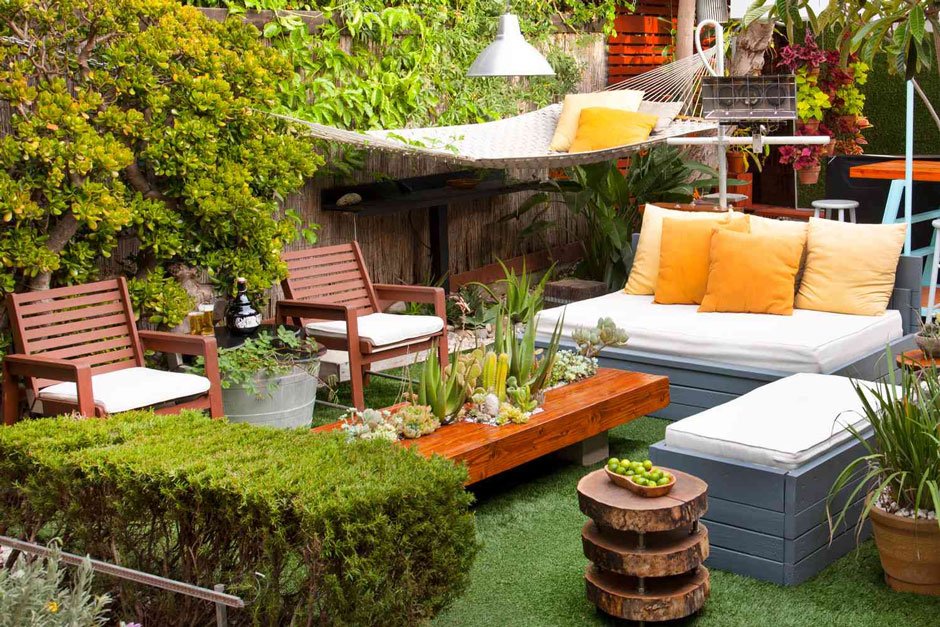
Outdoor spaces have the power to turn daily routines into experiences of comfort, connection, and renewal. A carefully designed lawn does more than provide a pleasing view; it fosters relaxation, supports gatherings, and encourages ecological responsibility. With mindful planning, every corner of a yard can develop into a setting that balances functionality with natural beauty.
Homeowners today face shifting conditions like higher water costs, seasonal droughts, and growing environmental awareness. Choosing resilient turf blends, nurturing rich soil, and designing thoughtful layouts offer lasting solutions. Hydroseeding, plant layering, and zone-based planning combine modern efficiency with timeless enjoyment, producing an outdoor retreat that thrives across seasons.
Establishing a Healthy Lawn Foundation
Building a lasting lawn begins below the surface. Remove debris, compacted soil, and invasive roots, then grade the subsoil so water drains away from the home. A good choice would be to work with a hydroseeding company who can provide the advantage of a uniform application of mulch, seed, and starter fertilizer in a single pass, producing quick coverage and helping seedlings establish evenly across the yard.
Seed choice should match climate and light conditions, with drought-tolerant or shade-friendly varieties reducing upkeep. Mixing compost into the topsoil enriches structure, promotes root depth, and supports microbial activity. Timing the seeding for favorable weather further strengthens results. A balanced base, often using one part compost to three parts soil, lays the groundwork for healthy growth and future outdoor use.
Designing Functional Outdoor Zones
Functional design turns outdoor spaces into seamless extensions of daily life. Patios near entryways ease dining and gatherings, while wide walkways create effortless movement between zones. Thoughtful furniture placement avoids clutter, opening sightlines across lawn, garden, and living spaces. The flow feels natural, with each feature serving purpose without breaking visual or physical continuity.
Backyards thrive when balance exists between energy and calm. Play spaces, raised beds, and shaded nooks can coexist without disrupting harmony. Subtle shifts—stone edges, gravel paths, or low retaining walls—signal transitions while maintaining openness. Every feature integrates with its surroundings, encouraging movement and connection, while still offering restful corners that invite pause and comfort.
Layering Plants for Comfort and Visual Interest
Planting with layers adds dimension, comfort, and character. Tall shade trees can block harsh afternoon sun, while mid-height evergreens offer structure through colder months. Perennials provide seasonal color and texture, giving each corner its own sense of rhythm. Seating placed just inside a tree’s canopy benefits from natural cover without losing light or air circulation.
Privacy and softness often come from living barriers. Dense hedges and climbing vines filter unwanted views while also calming sound. Contrasting leaf shapes, stem forms, and bloom cycles create variety that holds attention year-round. Position shrubs a few feet from turf to reduce root competition, and allow twelve to fifteen feet between larger trees and seating areas.
Installing Efficient Watering Systems
Smart irrigation makes a lawn resilient and sustainable. Dividing a yard into zones allows sprinklers, rotors, and drip systems to deliver water precisely where it is needed. Modern controllers adjust cycles to weather changes, preventing waste while sustaining turf, shrubs, and perennials at their healthiest. Careful mapping of zones gives each plant group the right depth and frequency of watering.
Mulch applied two to three inches deep conserves moisture and regulates soil temperature. Organic wood chips protect trees and shrubs, while compost enhances perennials. Grouping plants with similar water needs strengthens efficiency. Early morning cycles reduce evaporation, and trimming run times after rainfall maintains balance between conservation and growth.
Adding Personal Features That Define the Space
Personal details turn outdoor areas from functional to meaningful, creating spaces that feel uniquely tied to their owners. Seating should reflect intended use, with compact bistro sets offering intimate morning moments and modular arrangements supporting lively gatherings. Durable choices—such as teak, wrought iron, or weather-resistant fabrics—stand up to the elements while still conveying elegance and comfort.
The finer touches ground the design in identity and memory. Native shrubs echo the character of the region, while heirloom pieces like lanterns, benches, or carved stone accents carry history into the space. Clear pathways between furniture groupings maintain natural flow, giving every feature room to contribute without diminishing openness.
A lawn and garden designed with sustainable choices offer a rare blend of beauty and practicality. Careful soil preparation, resilient planting, and efficient irrigation create conditions that support lasting growth while minimizing waste. Distinct outdoor zones encourage relaxation, play, and social connection, while small personal details provide comfort and character. Every decision, from the placement of shade trees to the addition of lighting, contributes to a balanced environment. With planning that respects both ecology and lifestyle, any yard can become a setting that feels welcoming each day and remains adaptable through the rhythm of changing seasons.
